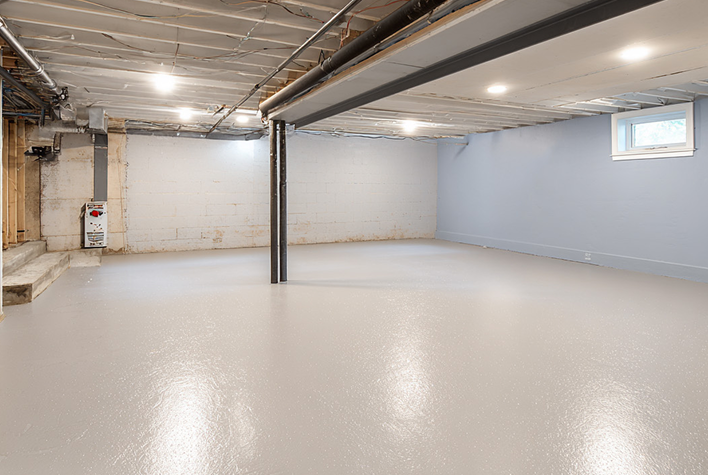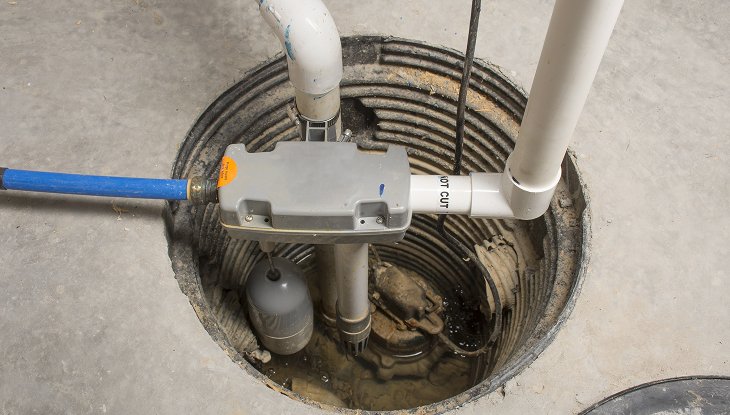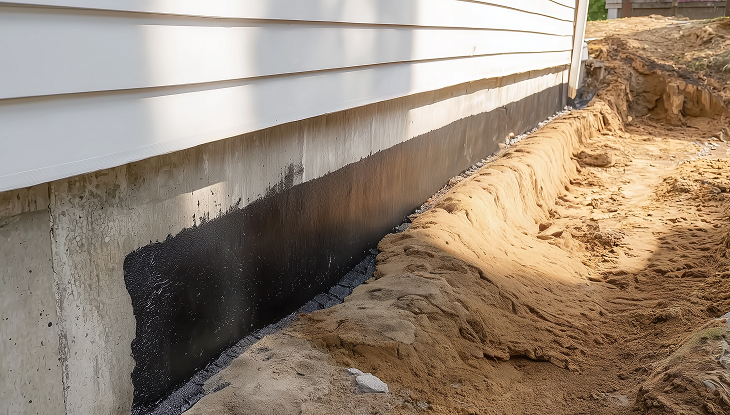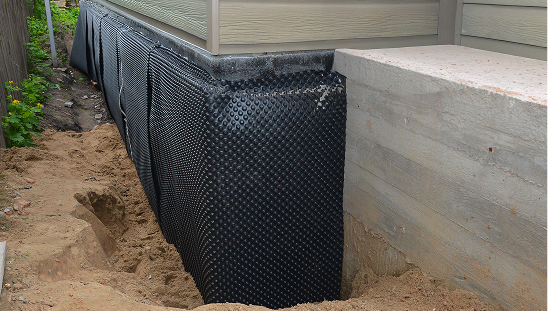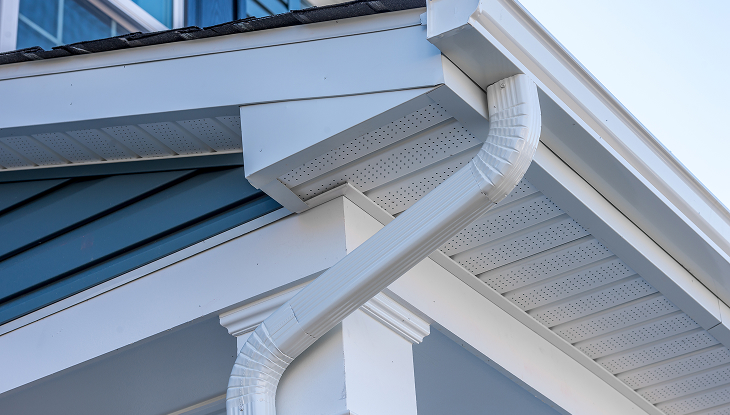Key Points
- Basement waterproofing typically ranges from $12,500 to $50,000, with an average cost of $25,000.
- Factors influencing the cost include basement size, location, waterproofing method, and labor.
- DIY options, such as applying waterproof paint, can reduce costs, but professional help is recommended for the best results.
- Common signs that waterproofing is needed include water puddles, musty odors, mold growth, and cracked walls.
- Hiring a professional ensures proper execution and warranty protection, preventing future costly repairs.
Dealing with a damp, musty basement? The hidden costs of water damage, from mold to structural issues, can add up quickly. However, the upfront cost of waterproofing your basement might seem high. Let’s find out how it can save you in the long run and why it’s an investment you can’t afford to skip.
Basement waterproofing can cost you anywhere from $12,500 to $50,000, on average. With minor repairs, you may only need to pay around $600 to $1,000. However, the final project cost depends on factors like basement size, location, labor, and waterproofing method.
In this article, we will break down all the factors that can affect your total cost in detail and even share helpful money-saving tips!
What is the Average Cost for Basement Waterproofing?

Most homeowners wonder, “How much does it cost to waterproof your basement?”.
Well, the average cost for basement waterproofing ranges from $12,500 to $50,000.
While most homeowners spend around $6,000 to fully waterproof their basements, the final cost can vary based on several factors, such as:
We’ll explore all the factors in detail below to help you understand what might affect the overall cost of basement waterproofing.
What Are the Signs You Need to Waterproof Your Basement?
You definitely don’t want to end up paying thousands later on because you delayed or skipped waterproofing your basement. If you’re unsure whether your basement needs waterproofing, look for these signs:
What Factors Are Involved in Calculating Basement Waterproofing Costs?
Let’s look at the factors one by one that can add up to the cost of waterproofing your basement.
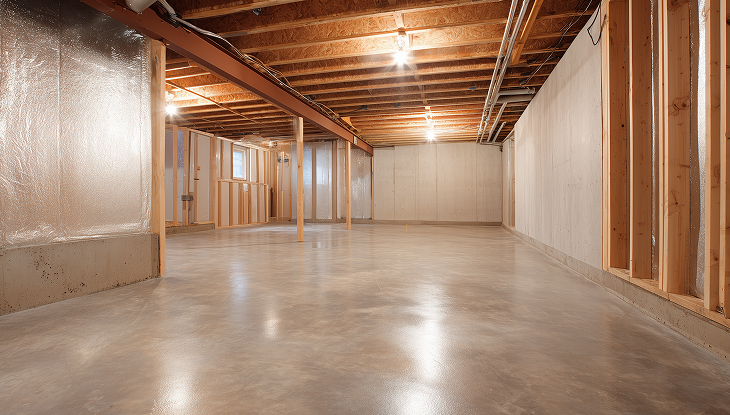
Basement Size and Layout
The bigger your basement, the more materials and labor will be needed for waterproofing.
Additionally, the layout of your basement can affect the total cost. For instance, if parts of your basement are hard to reach or require extra work, you will need to pay more.
On average, basement waterproofing ranges from $3.50 to $8 per square foot, including materials and labor.
Waterproofing experts generally charge based on square footage, especially if the job is extensive.
- Basement Size (Sq Feet)Waterproofing Cost on Average
- 500$2,000 – $4,000
- 1000$4,500 – $8,000
- 1200$5,840 – $9,600
- 1500$6,250 – $12,000
- 2000$9,500 – $22,000
Interior vs. Exterior Solutions
Whether you will have to waterproof your basement from the inside or outside can impact the cost of your project.
Interior solutions are easier to execute. On the other hand, exterior solutions may require excavating or the use of specialized machinery, equipment, and skilled labor.
As a result, exterior solutions can significantly increase the total project cost.
Labor
Labor costs can significantly affect the overall cost of waterproofing your basement. Some contractors charge on a per-hour basis while others can charge on a project basis especially if the project is smaller.
Labor fees can range from $3 to $6 per square foot. When talking about hourly rates, your contractor can charge you anywhere between $16 to $20 per hour, depending on their experience and the project’s extensiveness.
Geographic Location
The location of your home will greatly influence the final cost of basement waterproofing.
In areas with a low cost of living, labor and material costs will be lower.
Furthermore, in regions with a lot of rainfall and high humidity levels, waterproofing costs can be higher.
Due to these conditions, waterproofing can be in high demand, causing contractors to charge more. While these higher charges may seem unreasonable, the work will be more challenging and extensive than in drier areas.
Type of Sealant
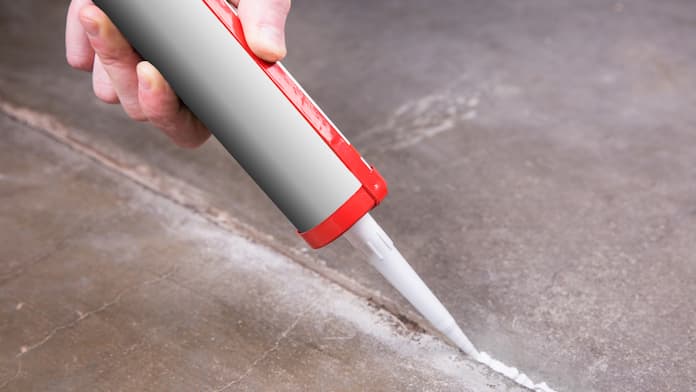
Sealants are typically applied to the foundation walls, slabs, and floors to waterproof a basement. They start as liquids and harden after application to provide waterproofing.
The type of sealant used in basement waterproofing significantly affects the overall cost due to differences in materials, labor, and application methods. Here’s a detailed breakdown:
| Sealant Type | Location | Average Cost per Square Foot |
|---|---|---|
| Acrylic Sealants | Interior | $3 - $4 |
| Silicate Sealants | Interior | $4 - $6 |
| Epoxy Sealers | Interior | $5 - $7 |
| Liquid Membranes | Exterior | $4.50 |
| Sheet Membranes | Exterior | $5 |
| Cementitious Coatings | Exterior | $4 - $6 |
| Bentonite Waterproofing | Exterior | $3 - $4 |
Interior Sealants
Interior sealants are applied to the interior walls and floors of the basement and are usually painted or sprayed directly on the concrete surfaces. Here are the three main types of interior sealants:
Acrylic Sealants
Acrylic sealants cost between $3 and $4 per square foot. They are cost-effective since they involve less labor and can even be a DIY project.
Silicate Sealants
Silicate sealers penetrate concrete and chemically react to form calcium silicate hydrate, reducing porosity and strengthening the material.
They cost $4-$6 per square foot and are best for new or unpainted concrete surfaces.
Epoxy Sealers
Epoxy injections are harder to install and can be a bit expensive, ranging from $5 to $7 per square foot.
They are used for repairing cracks, so they are only effective for small, localized issues but can add up if there are multiple cracks.
Exterior Sealants
Exterior sealants are applied to the exterior foundation walls and footings of the basement. Since they require excavation to expose the foundation walls, they are more labor-intensive and invasive. Here are the types of exterior sealants:
Liquid Membranes
According to Statista, the waterproof membrane market exceeded 29 billion U.S. dollars in 2021 and is expected to reach 40 billion U.S. dollars by 2026.
This growth shows how much homeowners are willing to invest in these membranes due to their superior properties.
Nevertheless, liquid membranes are durable but require multiple coats and professional application to prevent water from seeping through the walls into the basement. They cost about $4.50 per square foot, including materials and labor.
Sheet Membranes
Sheet membranes can be more expensive than liquid membranes due to being more labor-intensive and requiring extensive preparation.
They cost around $5 per square foot. These membranes are typically wrapped around the foundation and basement walls to prevent water from entering.
Cementitious Coatings
Cementitious coatings cost about $4 to $6 per square foot. While they provide a durable finish, they may not be as flexible as other options, making them less effective if the foundation shifts or cracks.
Bentonite Waterproofing
Bentonite is a clay-based natural sealant that fills cracks and costs around $3 to $4 per square foot. It serves as a good temporary solution but may not be as durable as other methods.
Basement Waterproofing Cost by Method
The cost of basement waterproofing varies widely depending on the method used and the extent of the work required. Here’s a breakdown of the costs by method:
| Waterproofing Method | Location | Estimated Cost |
|---|---|---|
| Sealing with Paint or Sealants | Interior | $2 - $7 per square foot |
| Sump Pump Installation | Interior | $7,000 - $18,000 |
| French Drain Installation | Interior | $85 per linear foot |
| Exterior Sealing | Exterior | $3 - $6 per square foot |
| Exterior Drains | Exterior | $25 per linear foot |
| Gutters and Downspouts | Exterior | $600 - $1,550 |
| Window Well Drains | Exterior | $500 - $2,000 per drain |
Interior Waterproofing Methods
Let’s look at the most common interior waterproofing methods one by one.
Sealing with Paint or Sealants
Sealants are effective in preventing moisture from seeping through the walls. Waterproofing paint costs around $2 to $6 per square foot. Interior sealants, as mentioned above, range from $3 to $7 per square foot.
Sump Pump Installation
A sump pump helps drain water out of the basement and away from the foundation and home. While it provides long-term waterproofing, it only removes standing water, not seepage from the basement walls.
Therefore, it’s best to use other waterproofing solutions along with it. Installation can be expensive, costing between $7,000 and $18,000.
French Drain Installation
You can prevent flooding by installing a French drain in your basement. This system carries water from the perimeter of your basement to a sump pump or another drainage system.
It costs around $85 per linear foot, but you’ll need additional solutions to completely waterproof your basement.
Exterior Waterproofing
Here are the exterior waterproofing methods that you should know:
Exterior Sealing
Exterior sealants are applied to the outside of the foundation walls and footings of the basement.
As we’ve already discussed above, liquid membranes cost about $4.50 per square foot, including materials and labor.
Sheet membranes cost around $5 per square foot, cementitious coatings range from $4 to $6 per square foot, and bentonite waterproofing costs about $3 to $4 per square foot.
Exterior Drains
While interior and exterior drains function similarly, exterior drains are cheaper and easier to install, costing around $25 per linear foot.
Gutters and Downspouts
During heavy rainfall, without gutters, water can drip down the roof and collect near the foundation walls. This is why gutters and downspouts are essential. Downspouts direct water away from the foundation.
Gutter installation costs range from $600 to $1,550.
Window Well Drains
If you plan to use your basement as a living area, it’s important to have egress windows for emergency escapes. These windows have wells around them to function properly. Without proper drainage, water can pool in these wells and cause leakage.
The installation cost for window well drains ranges from $500 to $2,000 per drain.
Additional Costs and Considerations Related to Basement Waterproofing
When considering basement waterproofing, it’s important to account for both the direct costs of the waterproofing methods and the additional factors that can impact the overall expense.
Expert Tips to Save Money on Basement Waterproofing Cost
If you’re looking for the cheapest way to waterproof your basement, you can implement these pro tips to save money:
Should You DIY Your Basement Waterproofing or Hire a Professional?
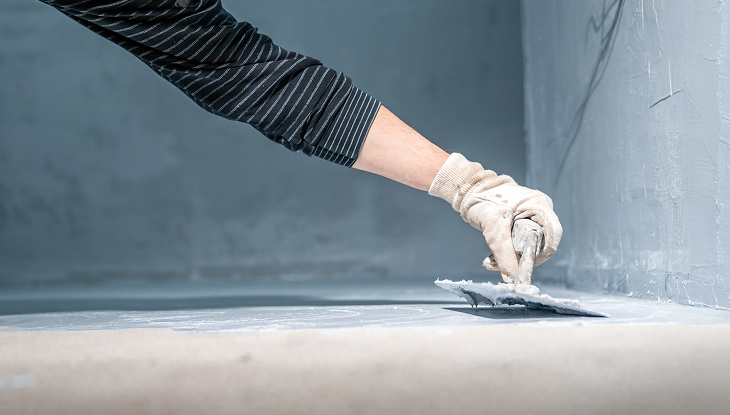
Since labor fees can add up to the total cost of your basement waterproofing project, some may consider DIYing it to save money.
However, you can’t and shouldn’t completely DIY waterproofing. While you can handle small tasks like removing items in the basement, applying waterproof paint, or repairing minor leaks, the rest of the job should be handed over to a professional.
They are well-trained and have the expertise to figure out the best waterproofing method for your needs.
A professional will ensure that your project is done correctly from start to finish. Additionally, if you DIY the waterproofing, you won’t get a warranty on the products or systems from the manufacturer. Performing the job incorrectly could lead to more hassle, stress, and cost down the road.
Therefore, it’s better to leave the job to a professional. To vet the right one, ask these questions:Are you licensed and insured?
Conclusion
Waterproofing your basement can range from $2,000 to $7,000, depending on factors like basement size, waterproofing method, home age, location, and labor costs. While some might consider saving money by doing it themselves, we don’t recommend it due to the potential risks involved.
Instead, hiring a professional contractor is the best approach. For this, you can use our Homebuddy tool to find a reputable local contractor for basement waterproofing near you. With over 13,200 successful projects, you can trust us to put you in good hands.
Frequently Asked Questions
Will waterproofing my basement increase my home value?
Yes, waterproofing your basement can increase your home’s value by preventing water damage, enhancing structural integrity, and creating usable living space. Potential buyers often find a dry, functional basement appealing, which can make your home easier to sell and potentially command a higher price.
Is it better to waterproof a basement from the inside or outside?
Waterproofing a basement from the outside is generally more effective and provides long-term protection by preventing water from entering in the first place. However, it is more expensive and disruptive. Interior waterproofing is less costly, and less invasive, and manages water that does enter, making it suitable for minor issues or budget constraints.
Is basement waterproofing covered by homeowner's insurance?
Homeowner’s insurance typically does not cover the cost of basement waterproofing as it is considered a preventative measure. However, it may cover damage caused by sudden events like burst pipes, appliance malfunctions, or sump pump failures if additional endorsements are added to the policy.
Which is the cheapest basement waterproofing method?
The cheapest basement waterproofing method is using interior sealants or waterproof paint, which cost $2 to $7 per square foot. This method involves applying coatings to the interior walls to prevent moisture from seeping through. However, it’s essential to note that this is typically a temporary solution and may not address the root cause of water infiltration.
